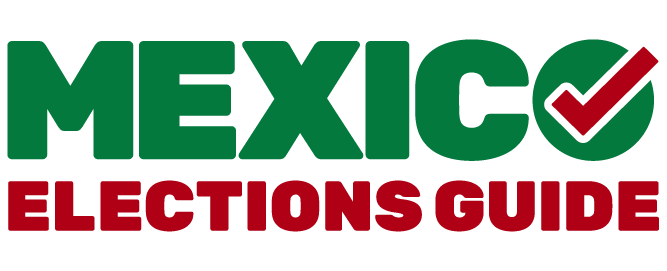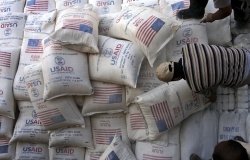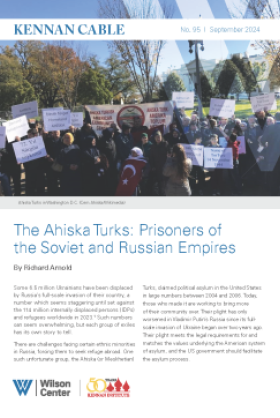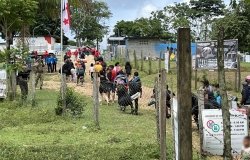Explore More
CloseSpring 2019 Survey of Farm Workers
There are three key findings from the worker surveys and focus groups:
- Good Jobs.
Mexico’s export-oriented agriculture creates good jobs for workers with little education. The 3,000 workers interviewed in Winter-Spring 2019 were an average 32, had 7.2 years of schooling, and earned 200 to 300 pesos or $10 to $15 a day (plus in-kind benefits), significantly more than Mexico’s minimum wage of 103 pesos a day. Harvest workers who are paid piece wages earn more, up to 500 pesos a day. Most of the workers employed on farms that export commodities are local residents, but a rising share are migrants from poorer mountainous regions and southern Mexican states.
- Payroll Taxes.
Mexico’s comprehensive social security system IMSS provides health, child care, and pension benefits to workers whose employers contribute 23 percent of wages paid, and make an additional contribution for a housing fund. Over 95 percent of workers interviewed on export-oriented farms reported that their employers paid social security taxes on their behalf, much higher than the 48 percent of all Mexican workers who are covered by IMSS. However, the government service providers funded by these payroll taxes often fail to deliver services to farm workers, especially child care, health care and housing (The Ministry for Social Development and the Ministry of Agriculture was providing some housing, health and child care, and other services to farm workers, but these programs are being reduced or eliminated). If government agencies provided more child care services, there would be more local women available to farm work, reducing the need for internal migration (many of local women employed in export agriculture pay for informal child care). Many workers who find formal jobs in export-oriented agriculture are not aware that they are accumulating IMSS pension benefits.
- Migration.
The expansion of export agriculture in Mexico creates jobs that mean less Mexico-US migration, but more internal migration within Mexico. Migration offers opportunities for people living in poorer areas to earn higher wages within Mexico and to send remittances to poorer areas, improving housing and increasing investment in the education and health care of children. Longer seasons are encouraging some migrants to settle near export-oriented workplaces, which moves workers and their families from poorer to richer areas that offer more opportunity but may result in segregated or crowded education and health care services if local governments do not quickly expand these services for new residents.
These findings lead to ten major recommendations for stakeholders:
- Education.
Stakeholders should raise awareness that export-oriented agriculture creates good jobs for workers with little education. Over three fourths of local and migrant workers employed on Mexican farms that export produce to the US are satisfied with their seasonal jobs and plan to return next season. The share of migrants is rising, which requires more attention to recruitment, housing, and related issues, including policy decisions on whether to encourage family migration and deal with the associated housing, education, and health issues, or whether to discourage family migration and focus on protecting solo workers who are temporarily away from their families. Deciding whether to encourage or discourage family migration has implications for many of the other recommendations.
- Payroll Taxes.
Almost all employers pay payroll taxes even though government agencies sometimes fail to provide the services funded by these taxes to their employees. The current situation of widespread employer enrollment of workers in IMSS but government agencies providing few services means that employees do not expect or value the services paid for by their employers. Some employers complain that they pay taxes and provide services that should be provided by IMSS. A Grand Bargain could lead to (1) government agencies providing missing services, (2) employers who provide missing services receiving credit against payroll taxes owed, or (3) some combination of credits for private provision of services and more government services to farm workers to maintain high levels of employer compliance.
- IMSS also provides pensions, which are likely to become an issue as the farm workforce ages. Farm employers contribute on behalf of their workers, but many of their employees will not qualify for IMSS pension benefits because they work only seasonally and thus do not make sufficient contributions to receive benefits. Adjusting IMSS qualification rules so that more farm workers qualify for pension benefits, as is done in parts of Sinaloa, would increase worker attachment to agriculture and reduce poverty among retired farm workers.
- Recruiters.
The labor contractors and other intermediaries who move workers from one area to another have long been problematic, in part because of their heterogeneity. Some labor contractors are employed directly by farms and supervise the workers they recruit, while others recruit workers in origin areas and do not travel with migrant workers to the workplace. There are also many small recruiters who organize, transport, and supervise crews of 20 to 50 workers. Governments efforts to regulate recruiters have had mixed results. One option is to make the farms that use recruiters jointly liable for any labor law violations committed by the recruiter. If enforced, such joint liability would encourage farms to have their own employees recruit or encourage them to rely only on vetted recruiters who comply with labor laws.
- Migration.
Many of the workers recruited to work away from their usual residences are poor and have little education; they often rely on oral promises made by recruiters about wages, working conditions, housing, and other aspects of working away from home. Farming associations could develop brochures in simple language to be approved by the government that lay out the rights and responsibilities of migrant workers and ensure that this brochure is distributed during recruitment and explained to workers. The brochure should include government and private hot lines to which workers with problems can complain, and should be posted in workplaces and housing areas with migrants.
- Settlement.
Workers seeking opportunity will continue to leave mountainous areas and southern Mexican states for jobs in richer areas with export-oriented agriculture. Some will settle near their workplaces, especially as work periods lengthen. As migrants move from on-farm housing into nearby communities, coordinating councils of growers, NGOs, and local governments could ensure that now-settled workers and their families receive government services. There are often significant lags between when internal migrants settle and when the federal government, which collects most taxes, recognizes the additional residents and provides additional funds to integrate now-settled farm workers. Coordinating councils could develop mechanisms to promptly report new residents, seek additional government support, and ensure that services are provided.
- Peer Pressure.
Most buyers of fresh produce require sellers to abide by food safety protocols that involve farm-level plans to reduce the risk of contamination by testing water and commodities to ensure that food is safe, and to have trace-back systems to quickly identify where food safety problems originated. Growers have an interest in promoting food safety because of externalities; if a shipment of fresh produce sickens consumers, all producers suffer from reduced demand and lower prices.
There can be similar joint seller-buyer incentives for labor compliance due to externalities, as with threats to stop buying Bangladeshi garments and Thai shrimp due to reports of labor abuses. Industry-led efforts such as AHIFORES can be more effective than enforcement directed against individual labor law violators because industry insiders are most aware of problem employers.
- Extreme Poverty.
Recent reductions in extreme poverty in rural Mexico are due in part to more and better jobs in export agriculture. To maintain access to export markets, Mexican farm employers must continue to improve recruitment and employment systems and ensure that worker wages are sufficient to provide families with above poverty level incomes. The AMLO government should understand that improving worker well-being requires continued incremental improvements in farm worker wages and working conditions rather than attacks on export-oriented agriculture. Continuing to collect reliable data could reinforce this message of export agriculture reducing poverty.
- Environment.
Export-oriented agriculture is sometimes accused of sending scarce water and resources abroad. Farm exporters should make environmental investments that: 1) reduce illnesses among workers; 2) reduce chemical runoff to nearby aquifers; 3) reduce deforestation and plant trees to increase forested areas; and 4) limit competition for clean water with nearby cities and towns to ensure that ground water supplies are sustainable
- Informal employment.
Most of our interviews were with workers employed on large farms that offer formal jobs covered by IMSS. Other surveys have relied on snowball sampling of workers employed by smaller and informal farms that do not enroll employees in IMSS. We surveyed such free agent workers who work for cash for a day or week in San Luis Potosí, Jalisco and Michoacán, and found lower wages and no benefits. Informal farms account for a small share of Mexico’s produce exports, but they account for a large share of substandard wages and working conditions in export agriculture. Policy changes could help to formalize jobs in the informal agricultural sector, which would benefit workers and their employers and reduce a source of labor problems.
- Professionals.
Export-oriented farms hire professionals, from accountants and managers to pest advisors, providing upward mobility in some rural areas. Strengthening links between local educational institutions and the local agriculture industry would generate mutual benefits for workers, farmers, and regional economies.
About the Authors

Mexico Institute
The Mexico Institute seeks to improve understanding, communication, and cooperation between Mexico and the United States by promoting original research, encouraging public discussion, and proposing policy options for enhancing the bilateral relationship. A binational Advisory Board, chaired by Luis Téllez and Earl Anthony Wayne, oversees the work of the Mexico Institute. Read more















